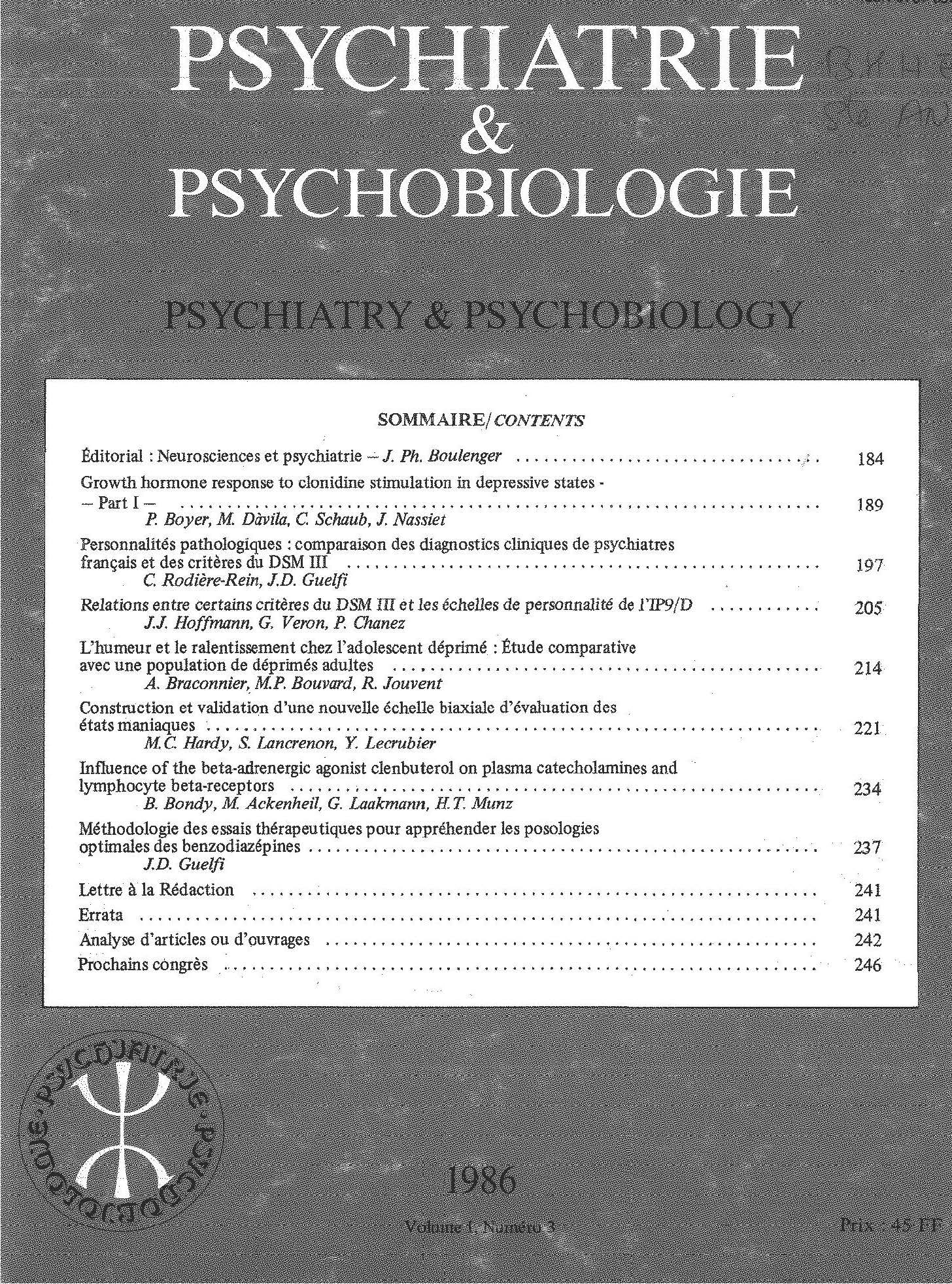Article contents
Personality, bioelectric profile and platelet monoamine oxidase activity in psychophysiological disorders: headaches, insomnia and loss of consciousness due to neurocirculatory dystonia
Published online by Cambridge University Press: 28 April 2020
Summary
A comparative study was carried out between a control group and different patient subgroups suffering from psychosonratic disorders: headache, insomnia and loss of consciousness due to neurocirculatory dystonia.
Different personality questionnaires (Minnesota Multiphasic Personality Inventory, Sensation Seeking Scale, Susceptibility to Punishment Scale), neurobioelectric parameters (Hjörth descriptors, alpha percentage, P100, N120 P200 of visual evoked responses) and platelet monoamine oxidase B (using phenylethylamine as substrate) were evaluated.
The results show a significant increase in anxiety indicators (at a psychometric and bioelectric level) in the headache and insomnia groups. MAO B activity was higher in patients, especially in the insomniac group; but no significant differences were found in any of the groups studied.
Résumé
Une étude comparative a été réalisée entre un groupe contrôle et différents groupes de malades présentant des troubles «psycho-fonctionnels» comme des céphalées, une insomnie ou des pertes de connaissance d'origine neurocirculatoire.
Les données recueillies ont été celles du questionnaire de personnalité MMPI (Minnesota Multiphasic Personality Inventory), de la «Sensation Seeking Scale», de la «Susceptihility to Punishment Scale», de paramètres neurobioélectriques (descripteurs de Hjörth, pourcentage alpha, P100, N120, P200 des réponses visuelles évoquées) et de l'activité de la monoamine oxydase plaquettaire (en utilisant la phényléthylamine comme substrat).
Les résultats montrent une augmentation significative des indicateurs d'anxiété (tant au niveau psychométrique que bioélectrique) chez les malades souffrant de céphalées et d'insomnie. On a trouvé un niveau plus élevé d'activité MAO B chez les malades, en particulier dans le groupe « insomnie », mais sans que les différences observées entre les groupes soient statistiquement significatives.
Keywords
- Type
- Original article
- Information
- Copyright
- Copyright © European Psychiatric Association 1988
References
Références
- 2
- Cited by



Comments
No Comments have been published for this article.